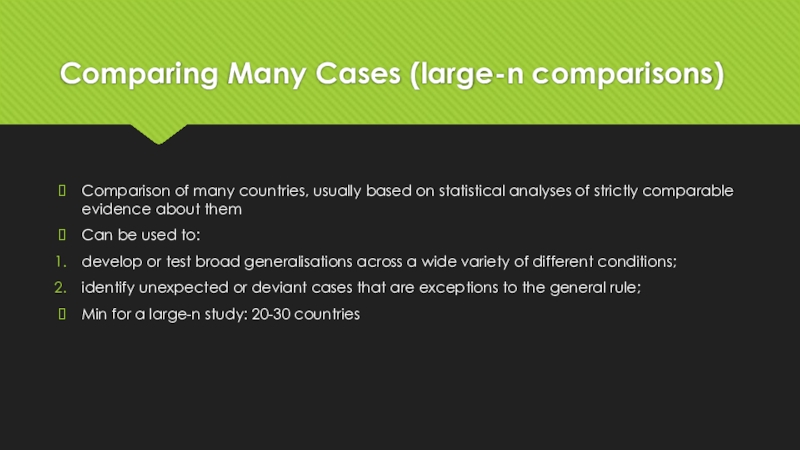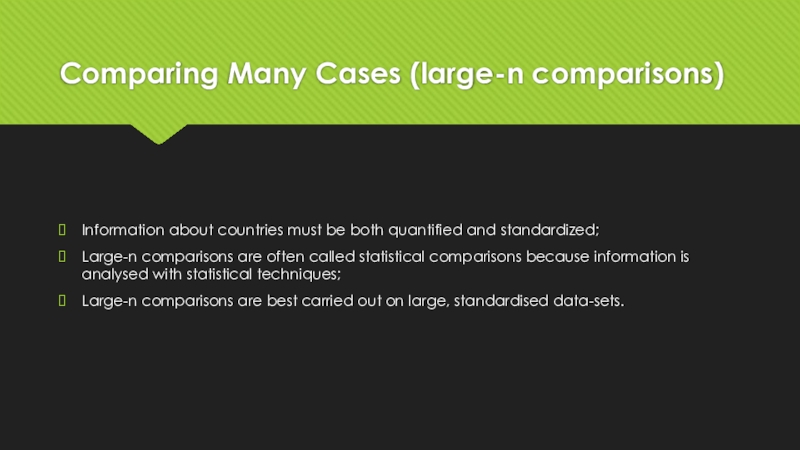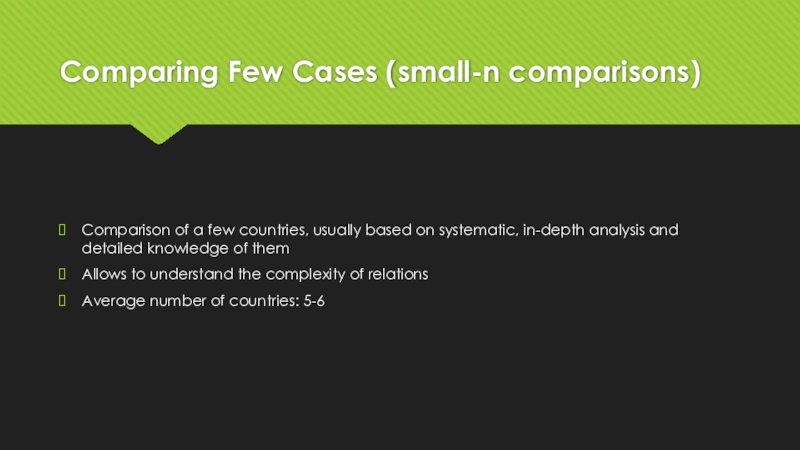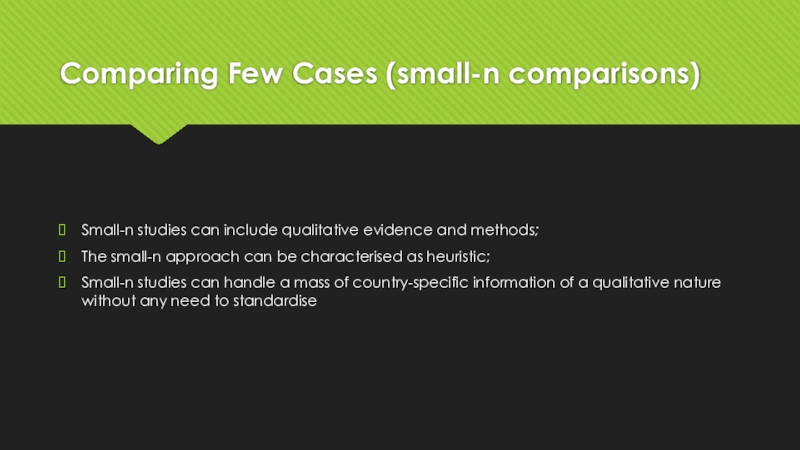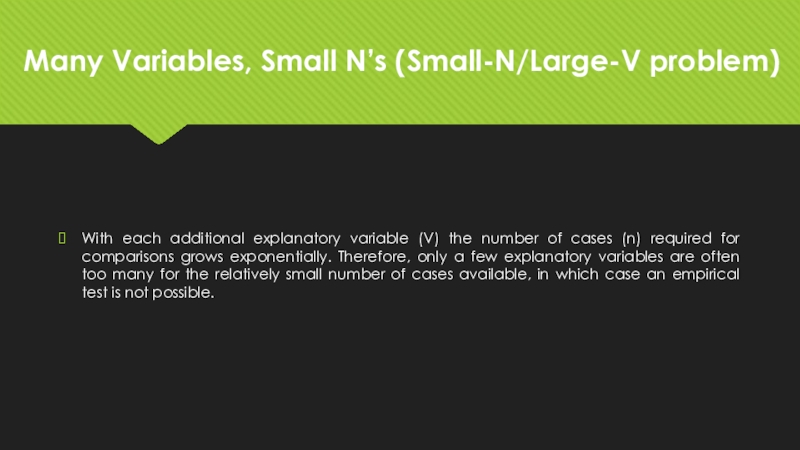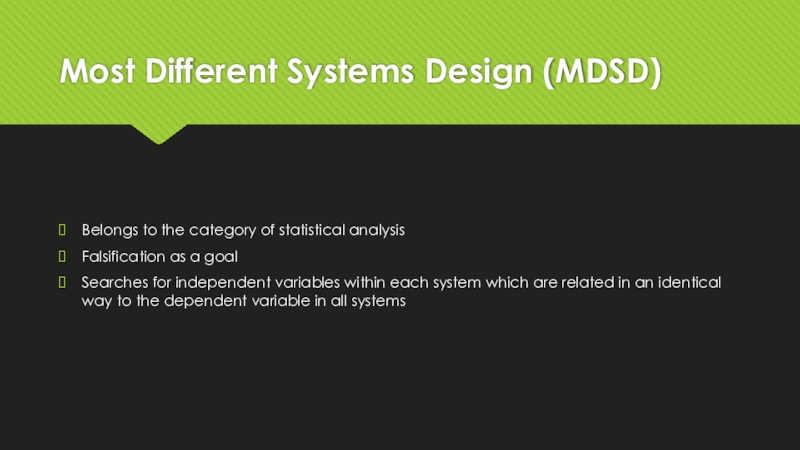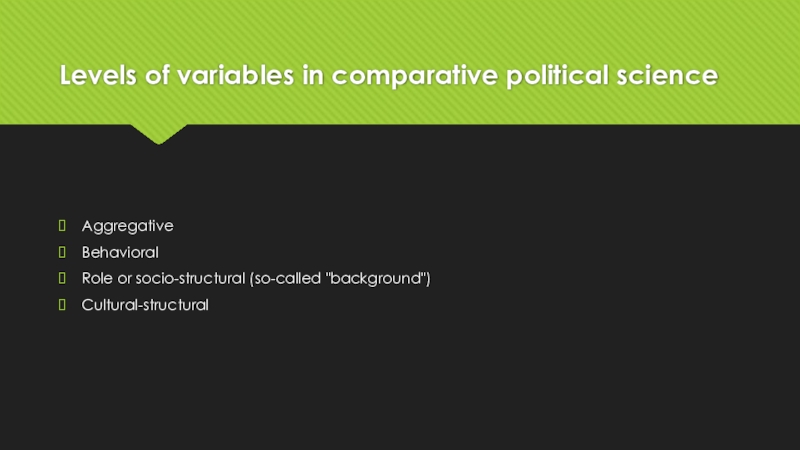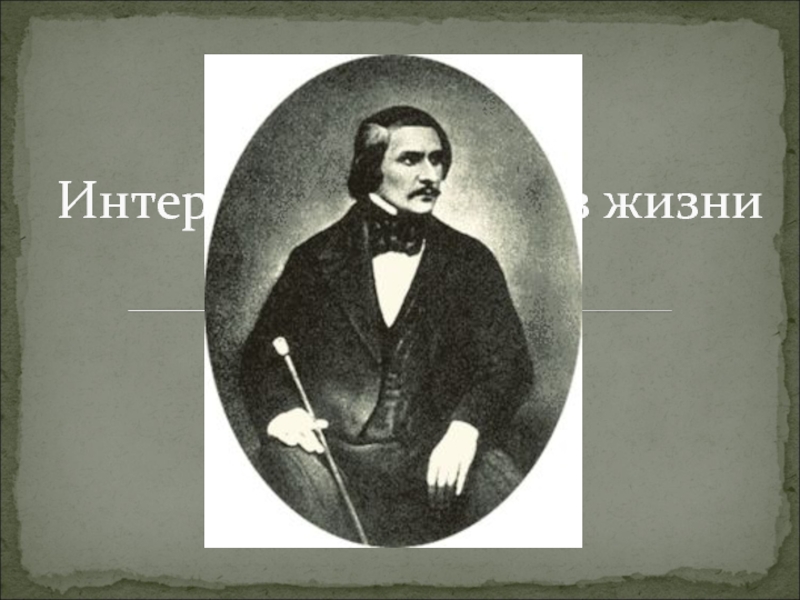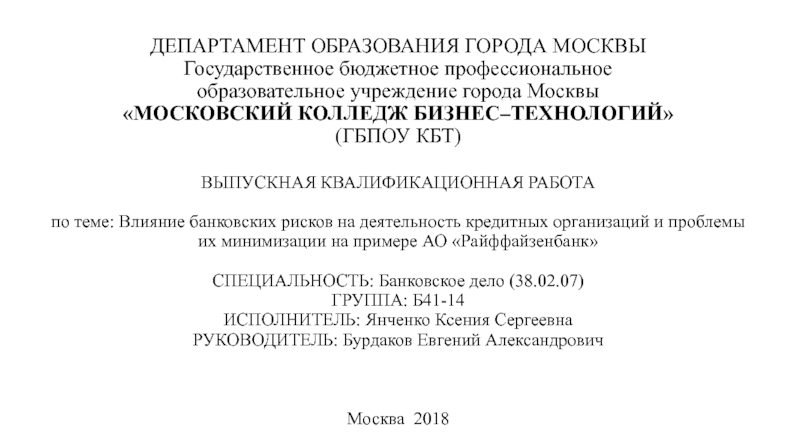Слайд 1Types and levels of comparative analysis in
political science
Слайд 2Plan
Types of comparative analysis: "case-study" comparison, regional comparison, global comparison.
Comparison of the
most similar systems (Most Similar Systems Design, MSSD). Comparison of
the most different systems (Most Different Systems Design, MDSD).
Levels of variables in comparative political science: aggregative, behavioral, role or socio-structural, cultural-structural.
Слайд 3Case Study
A case study may be understood as the intensive
study of a single case for the purpose of understanding
a larger class of cases (a population). Case study research may incorporate several cases. However, at a certain point it will no longer be possible to investigate those cases intensively.
At the point where the emphasis of a study shifts from the individual case to a sample of cases we shall say that a study is cross‐case.
Слайд 5Regional Comparison
Area Studies
Cross-Regional Comparisons
Слайд 6Global Comparison
Freedom House
Слайд 7Comparing Many Cases (large-n comparisons)
Comparison of many countries, usually based
on statistical analyses of strictly comparable evidence about them
Can be
used to:
develop or test broad generalisations across a wide variety of different conditions;
identify unexpected or deviant cases that are exceptions to the general rule;
Min for a large-n study: 20-30 countries
Слайд 8Comparing Many Cases (large-n comparisons)
Information about countries must be both
quantified and standardized;
Large-n comparisons are often called statistical comparisons because
information is analysed with statistical techniques;
Large-n comparisons are best carried out on large, standardised data-sets.
Слайд 9Comparing Few Cases (small-n comparisons)
Comparison of a few countries, usually
based on systematic, in-depth analysis and detailed knowledge of them
Allows
to understand the complexity of relations
Average number of countries: 5-6
Слайд 10Comparing Few Cases (small-n comparisons)
Small-n studies can include qualitative evidence
and methods;
The small-n approach can be characterised as heuristic;
Small-n studies
can handle a mass of country-specific information of a qualitative nature without any need to standardise
Слайд 11Quotes of the great
The simplest and most obvious modes of
singling out from among the circumstances which precede or follow
a phenomenon, those with which it is really connected by an invariable law, are two in number. One is, by comparing together different instances in which the phenomenon occurs. The other is by comparing instances in which the phenomenon does occur, with instances in other respects similar in which it does not. These two methods may be respectively denominated, the Method of Agreement, and the Method of Difference.
John Stuart Mill. A System of Logic.
Слайд 12Method of Agreement
If a phenomenon occurs in two or more
situations then the explanation for the phenomenon must lie in
the common features of those situations.
Слайд 13Method of Difference
If two or more situations are similar, but
the phenomenon exists in only one of them, its cause
must be related to the different features of its situation
Слайд 14
Most Similar Systems Design (MSSD)
Deals with too few cases to
allow the use of statistics (should be at least 2
cases)
Can manipulate experimental variables only indirectly through the careful selection/sampling of cases
The number of common characteristics sought is as few as possible
Problem of “many variables, small N’s” (small-n/large-V problem)
Слайд 15
With each additional explanatory variable (V) the number of cases
(n) required for comparisons grows exponentially. Therefore, only a few
explanatory variables are often too many for the relatively small number of cases available, in which case an empirical test is not possible.
Many Variables, Small N’s (Small-N/Large-V problem)
Слайд 16Most Different Systems Design (MDSD)
Belongs to the category of statistical
analysis
Falsification as a goal
Searches for independent variables within each system
which are related in an identical way to the dependent variable in all systems
Слайд 17Levels of variables in comparative political science
Aggregative
Behavioral
Role or socio-structural (so-called
"background")
Cultural-structural
Слайд 18
Role or socio-structural (so-called "background") variables
Social structural variables claim explanatory
power for the physical things people do to each other
Слайд 19
Cultural-structural variables
Cultural structural variables claim explanatory power for the
psychical things (thoughts and feelings) that people communicate to each
other.
Consensus (accompanying functionalism), complementarity (accompanying exchange), and dissensus (accompanying conflict).






